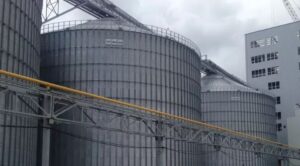
A pig breeding company in Lviv region has decided to build its own feed mill, according to KMZ Industries, which will supply elevator equipment for the plant.
According to the report, to ensure the storage capacity for the necessary raw materials and their further processing into compound feed, two cone silos with a total capacity of 1,020 tons for barley and wheat will be installed, one silo with a capacity of 143 tons for corn, and two silos with a capacity of 41 tons each for soybean and sunflower meal.
“Products from all silos will be fed in specific proportions to the feed line according to the recipe for further production of feed for pigs, chickens, etc. The capacity of the first line of the plant will be 2 tons/hour. In the future, it is planned to increase it to 10 tons/hour in order to produce feed not only for its own pig farm, but also for sale on the domestic market,” said Anton Goncharuk, regional representative of KMZ Industries.
For the transportation of agricultural products, a bucket elevator and three chain conveyors with a capacity of 50 tons/hour were selected, as well as five screw conveyors for feeding raw materials directly to the feed mill.
KMZ Industries is the largest manufacturer of elevator equipment in Ukraine and produces a full range of products, including silos, grain dryers, transport equipment, and separators, as well as providing automation and installation services.
According to the company, it has built more than 5,000 facilities. KMZ Industries silos with a total volume of more than 12.5 million cubic meters are currently in operation.

In 2024, the KSG Agro agricultural holding increased its gross revenue from pig farming to $8.9 million, which is 64% more than in the previous year, according to the press service of the agricultural holding.
“A 64% increase in profitability in a year, even in peacetime, can be considered a significant result. Even before the war, agricultural companies were accustomed to working with abnormal risks, including epidemics, crop failures, and climate change. The war has multiplied the unpredictability and the list of threats. Therefore, a high-quality risk management system is essential for agribusiness, and the current market position of our agricultural holding once again confirms this. We are ready to share our experience in risk and investment management during the war with other Ukrainian companies,” said Serhiy Kasyanov, chairman of the board of directors of the agricultural holding, as quoted by the press service.
According to him, the agricultural holding is developing vertical integration, regularly conducting stress tests of its business model, and adjusting its strategies. Ukrainian and European investors are responding positively to the agricultural holding’s obvious successes, considering it a highly profitable, albeit undervalued asset during the war.
The vertically integrated holding company KSG Agro is engaged in pig farming, as well as the production, storage, processing, and sale of grain and oilseeds. Its land bank in the Dnipropetrovsk and Kherson regions is about 21,000 hectares.
According to KSG Agro, it is one of the top five pork producers in Ukraine. In 2023, the agricultural holding company began implementing a “network-centric” strategy, under which it will move from developing a large location to a number of smaller pig farms located in different regions of Ukraine.

In 2025, KSG Agro will renew the pig population at its pig farm in Dnipro region by more than 3.5 thousand sows, with total investments in pig rejuvenation exceeding EUR1 million, the company’s press service reports.
“Rejuvenation of the pig population by replenishing sows is very important for us, as it allows us to significantly improve the quality characteristics of the herd. As a result, we will get better piglet health and improved taste characteristics of pork. In general, we expect to increase the efficiency of pig production by 15%,” explained Sergiy Kasyanov, Chairman of the Board of Directors of KSG Agro.
The process of reviewing proposals from international producers of various purebred pig genetics is currently underway, from which the most optimal parameters for the holding’s herd will be selected.
KSG Agro added that the total number of pigs in the holding is currently more than 60 thousand.
The vertically integrated KSG Agro holding is engaged in pig production, as well as the production, storage, processing, and sale of grains and oilseeds. Its land bank in Dnipropetrovska and Khersonska oblasts is about 21 thousand hectares.
According to the agricultural holding, it is one of the top 5 pork producers in Ukraine. In 2023, it launched a “network-centric” strategy, which will move from developing a large location to a number of smaller pig farms located in different regions of Ukraine.
In January-September 2023, KSG Agro received $1,336 million in net profit, which is almost 14 times more than in the same period in 2022. Its EBITDA for the three quarters of this year increased by 67% to $4.5 million, and its profit from sales increased by 16% to $11.9 million.
In January-March 2024, KSG Agro agricultural holding reduced its net profit by 37% to $0.96 million, while revenue decreased by 2% to $5.02 million. Its EBITDA decreased by 2% to $1.83 million.
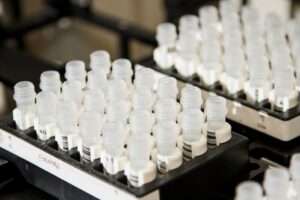
Today we are going through the most difficult times in the history of Ukraine’s independence. As a result of the war, many sectors of the economy are operating at minimal profitability or even at a loss, and suffer financial losses every day due to logistical and personnel problems, enemy attacks on energy infrastructure, and mining of farmland. However, there are industries that could take advantage of the global situation and make a real breakthrough and support Ukraine’s economy during the war. Among these industries is the Ukrainian meat industry.
Back in 2014, the war began with the massive introduction of African swine fever (ASF) from the border areas of Luhansk, Donetsk, and then Chernihiv regions – with pig corpses along the border rivers and with the massive migration of infected wild boar to the border areas. Until February 2022, the Veterinary Service somehow managed, with varying success, to contain the unprecedented onslaught of ASF cross-border spread in the world: even in the face of gross violations of biosafety standards and illegal trade in pigs infected with ASF due to the lack of compensation to farmers affected by ASF. But not now, when Russia can bomb Ukraine with viruses and its state agro-terrorism against the backdrop of nuclear threats from it no longer seems so significant: we are on the verge of collapse of the meat industry and pig production in Ukraine.
The losses of the Ukrainian pig industry from ASF in 2024 may amount to 50% of the pig population a year earlier.
The history of pig breeding clearly shows that no epizootic emergency has ever been brought under control without strict quarantine measures, which were sooner or later mitigated by the development of appropriate vaccines.
For more than 100 years, humanity has not been able to develop a vaccine against ASF due to the special properties of its pathogen: in particular, because its most dangerous structures are not on the surface but in various internal layers of viral particles – virions. Only at the cost of great intellectual efforts, enhanced by artificial intelligence, and enormous material and technical investments, by 2020 Europeans, together with the Americans, managed to develop about a dozen recombinant candidate vaccine strains. And already in 2022, based on no more than three of them, the Americans, together with the Vietnamese and Japanese, developed the world’s first biotechnology facilities for the production of commercial vaccines against ASF. The safety of these vaccines and their ability to stop ASF outbreaks in Vietnam, Indonesia, and the Philippines have been proven in about one million pigs. Countries in Central America, Africa, China, and Ukraine have expressed interest in these vaccines. Their effectiveness is being studied by the European Union: in 2024, registration trials began in Romania, where the ASF situation is much calmer than in Ukraine, and EU scientists received grants to study the dynamics of the epizootic process in Asian countries. In the EU, the ASF control system makes it easy to contain the disease at the level of sporadic cases in wild boar populations.
The Ukrainian Meat Industry Association has always paid special attention to the possibility of overcoming the main enemy of the meat industry and pig breeding – ASF. Therefore, in 2023, we supported the initiative of the Center for Animal Production Efficiency LLC to conduct registration studies of the first commercial vaccine against ASF and, in case of positive results, to apply through the relevant state authorities for its accelerated registration in Ukraine. On April 07, 2023, we first made a proposal at the meeting of the Working Group on Meat Industry Development of the Ministry of Agrarian Policy to study the AVAC ASF Live vaccine against ASF (agenda attached).
In its October 2023 Memorandum, the World Organization for Animal Health (OIE) summarized the requirements for the use of ASF vaccines: it clearly indicates a) the high risk of using low-quality or inappropriate vaccines, b) the requirement to use ASF vaccination as part of the existing anti-epizootic measures and c) the third key requirement of the WHO, which was formulated on the basis of the study of scientific data, including reports from Southeast Asia, and addressed to manufacturers of ASF vaccines: they should familiarize themselves with and, upon agreement, adopt the criteria of the WHO 2023 draft standard as a basis for assessing their quality (https://www. woah.org/app/uploads/2023/10/a-bsc-report-sept-2023-1.pdf). According to the dossier materials provided by the manufacturer to the Center for Animal Production Efficiency LLC, the AVAC ASF Live vaccine meets the WHO regulatory requirements, but the question remains whether and under what conditions it will be able to protect the pig industry from field variants of the pathogen in the Ukrainian ASF nosoarea. This can only be done through registration trials.
After the release of the October Memorandum of the WHO, on November 02, 2023, the Ukrainian Meat Industry Association once again submitted a proposal to the Working Group on the Development of the Meat Industry of the Ministry of Agrarian Policy on the urgent need for the industry to study the possibility of vaccine prevention of ASF in Ukraine and progress with vaccine prevention of ASF in the world (protocol attached).
The Meat Industry Association also asked the OIE for methodological and legal assistance in the implementation of ASF vaccination in Ukraine in accordance with OIE requirements, which immediately received a positive response from the OIE leadership, and the Center for Animal Production Efficiency LLC began active communication with the OIE and its recommended scientific institutes and OIE scientists.
But the leadership of the Ukrainian Pig Association (UPA) decided in advance, in 2023, that this vaccine was not a vaccine at all, but a worthless candidate, and in order to block these trials, they resorted to their own interpretation of the data of scientific works and WHO decisions.
It would be funny, but given the current situation in the Ukrainian pig industry, it is sad to see that the authors from the ASU use their own conclusions on experimental results that have been very carefully analyzed by the editors of scientific peer-reviewed publications as arguments – precisely in terms of the validity of the conclusions.
The ASU’s interpretation of the October 2023 WHO Memorandum looks strange: the authors’ bias is evident in their translation of the first provision of the Memorandum on “The risks of using poor quality or non-compliant vaccines” as “vaccines with an unconfirmed status of safety and efficacy.” Given this potential for artistic representation, for some reason the authors of the ACS completely ignored the WHO provisions on vaccination as an integral part of existing anti-epizootic measures (“ASF vaccination should not be used as a stand-alone disease control measure”), and there is no need to talk about the WHO draft standard for ASF vaccine prevention – the ACS does not want to know about it.
But for some reason, the ACA decided to believe that Vietnamese vaccines against ASF registered in three countries do not currently have a confirmed status of a safe product and “truthfully” claim that these commercial products have the status of a “candidate vaccine against ASF” A vaccine cannot be considered a “candidate vaccine” if it has already been registered and recognized as a vaccine. In 2023, Vietnam provided Ukraine with official confirmation that the vaccines were properly registered (translation of the confirmation is attached). Furthermore, the ASU dared to interpret the results of a scientific scopus publication on the 2021 Vietnamese field isolate ASFV-GUS-Vietnam as derived from a mutation of the ASFV-G-ΔMGF vaccine strain… The article raises the issue of a thorough study of its impact on the evolution of the field virus in different ASF nosoareas, which is critically important for the implementation of ASF vaccine prevention, but there is not even a hint of the genetic fantasies of the ASF authors.
Even more surprising is the ASU authors’ interpretation of the scopus publication of a respected European scientific team on the genetic stability tests of the ASFV-G-ΔMGF vaccine strain. The ASU leadership makes a very far-sighted conclusion that the vaccine virus is capable of infecting, which means it is restoring virulence, quote: “Studies (Evaluation of African swine fever vaccine candidate ASFV-G-ΔMGF in conversion to virulence study at https://pubmed.ncbi.nlm.nih.gov/37248243/) showing that the ASFV-G-ΔMGF vaccine virus (used to formulate AVAC ASF Live) regains virulence (ability to infect).” What a deep understanding of scientific issues! Unfortunately, European scientists did not have the courage to interpret the results of serial passaging of the vaccine strain in this way. Their analytical abilities were only enough to make a cautious statement that “The genomic changes did not affect the recombination site, but included deletions and reorganizations in the terminal regions of the genome.” That is, they pointed to the stability of the genome and the absence of critical reversion of the vaccine strain. However, this does not negate the need for research aimed at, quote: “on the long-term effects and transmission characteristics before a thorough benefit-risk analysis can be conducted.” This is indeed a very important and scientifically balanced recommendation: and, unfortunately, not only for ASF vaccines, but also for all other viral vaccines used in pig production. After all, to the knowledge of the authors from the ASU, many of these commercial vaccines do have genomic changes, and it is in the recombination sites. This causes constant tension in our pig farms with circovirus and parvo virus infections, PRRS, Aujeszky’s disease… But the ASU management professes the theory that this can only happen with the AVACASFLive vaccine, because they have accurately established that “it restores virulence (the ability to infect).”
Well, it’s pointless to continue to analyze the “anti-vaccine efforts” of the ASU leadership, which is “concerned about false information and data manipulation” in the scientific publications mentioned above. We have translated these and the following “arguments” of the USBA into English and sent them, along with our arguments and explanations of the current situation with ASF in Ukraine, to the WHO and to the interested unions of pig producers and processors in the EU as part of the pan-European coalition to eradicate ASF in Ukraine and Europe, which is being formed on our initiative and with our participation.
Few people know now, but a similar situation occurred in the 1950s and 1960s with the introduction of a vaccine against classical swine fever developed in Kharkiv under the leadership of Professor I.I. Kulesko. The resistance of the “public” was similar.
As of October 2024, in Ukraine, after a year of talk and outright misinformation about ASF vaccine prevention, up to 50% of pigs in the industrial sector and in households have been lost. A significant number of pigs infected with ASF have been illegally sold for more than a year, causing an unprecedented wave of ASF in Ukraine. Losses to Ukraine’s economy reach €1 billion, as opposed to the growth and development of the industry, which is capable of providing €6 to €12 billion in added value annually.
These are the consequences of disinformation by the ASU leadership – the loss of €1 billion to the Ukrainian economy and the industry’s potential for growth.
It is time to move on from verbal battles and get down to business – to save the pig industry in Ukraine and analyze the pros and cons of ASF vaccine prevention based on our own results – and in the current conditions of its Ukrainian noso-area. No one will do this for us, and it is a pity if some pig producers still do not understand this. And this can only be done within the framework of registration trials, appropriately – according to the program kindly prepared for us by the WHO, in the edition of the European Veterinary Union.



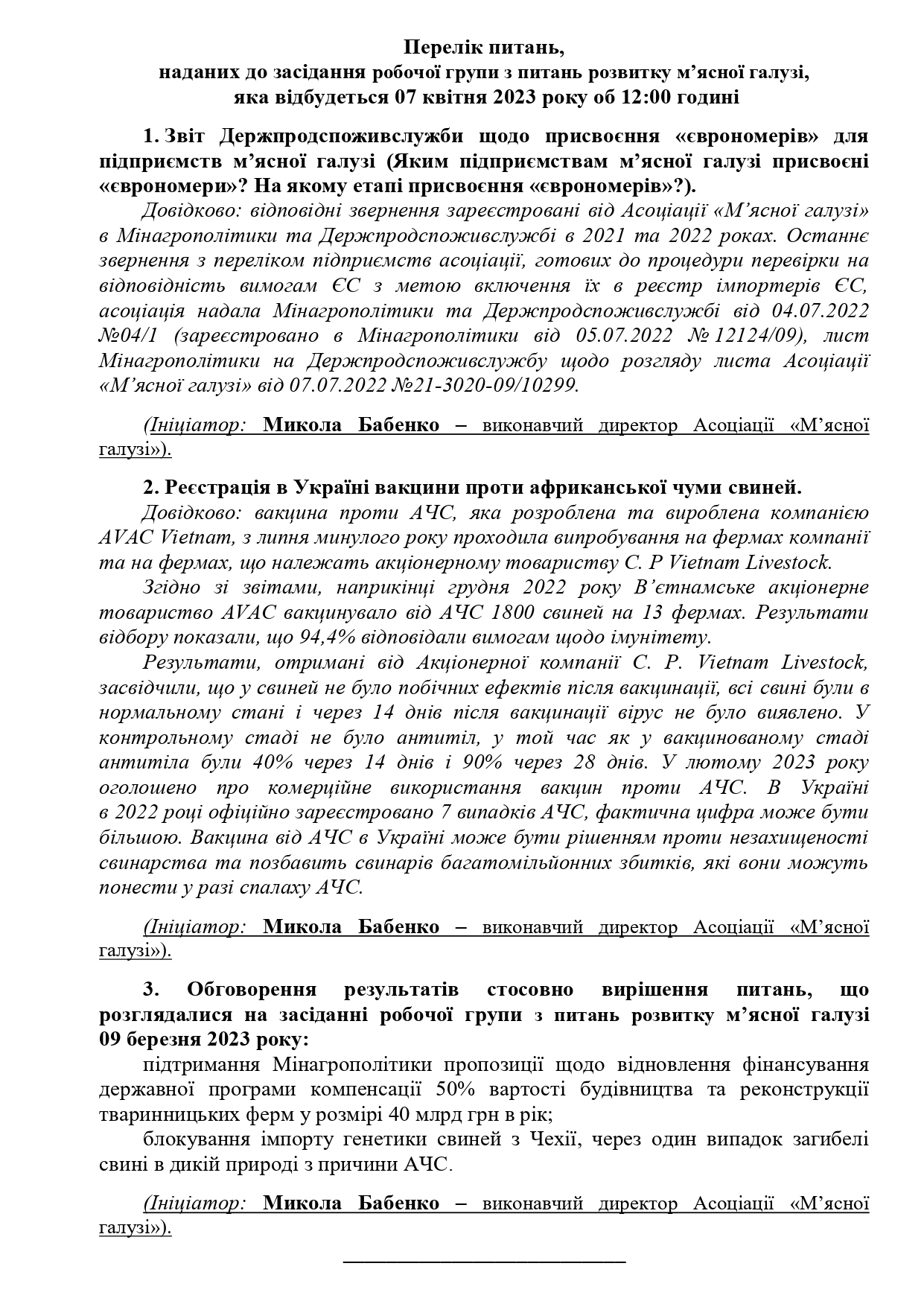
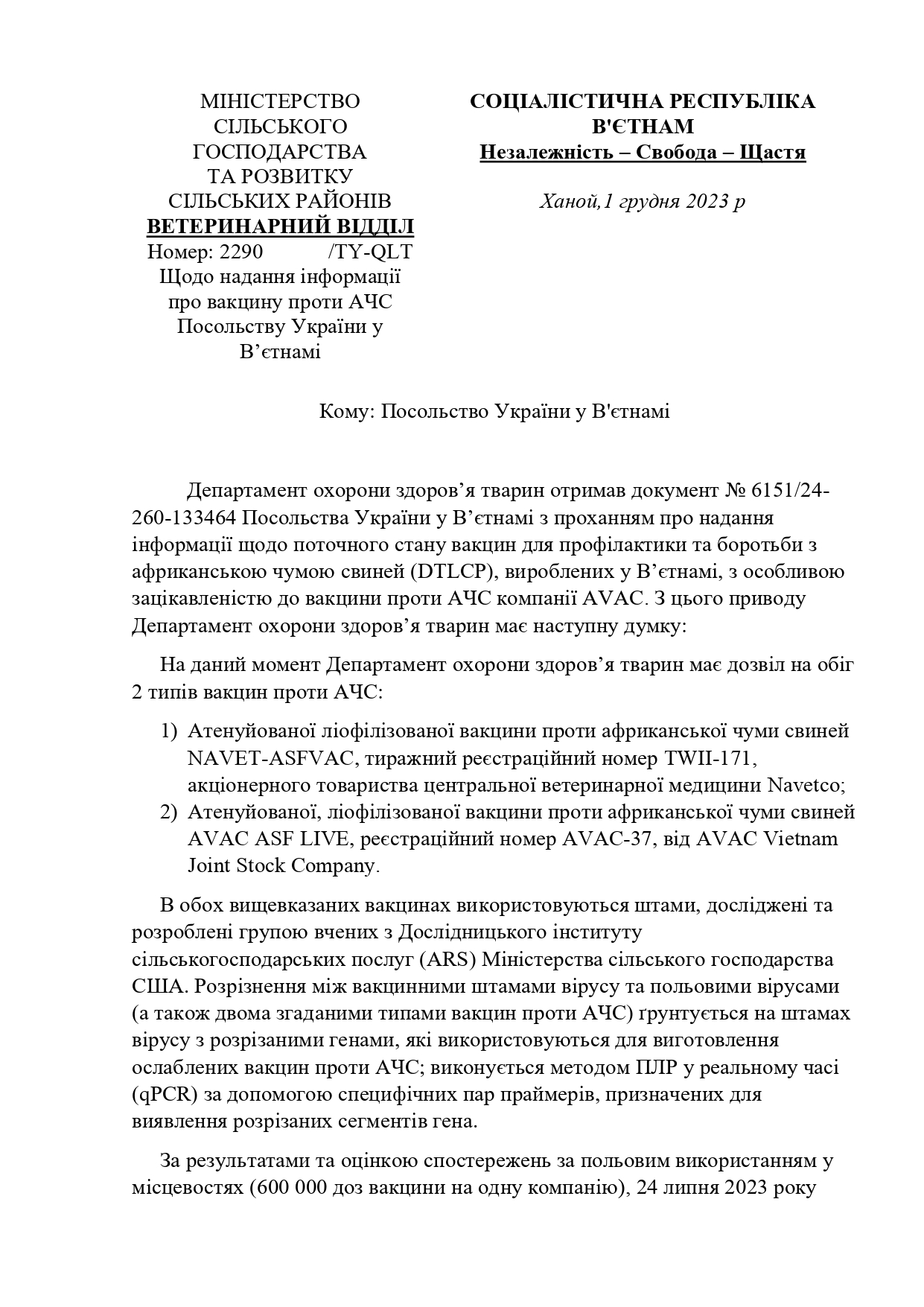
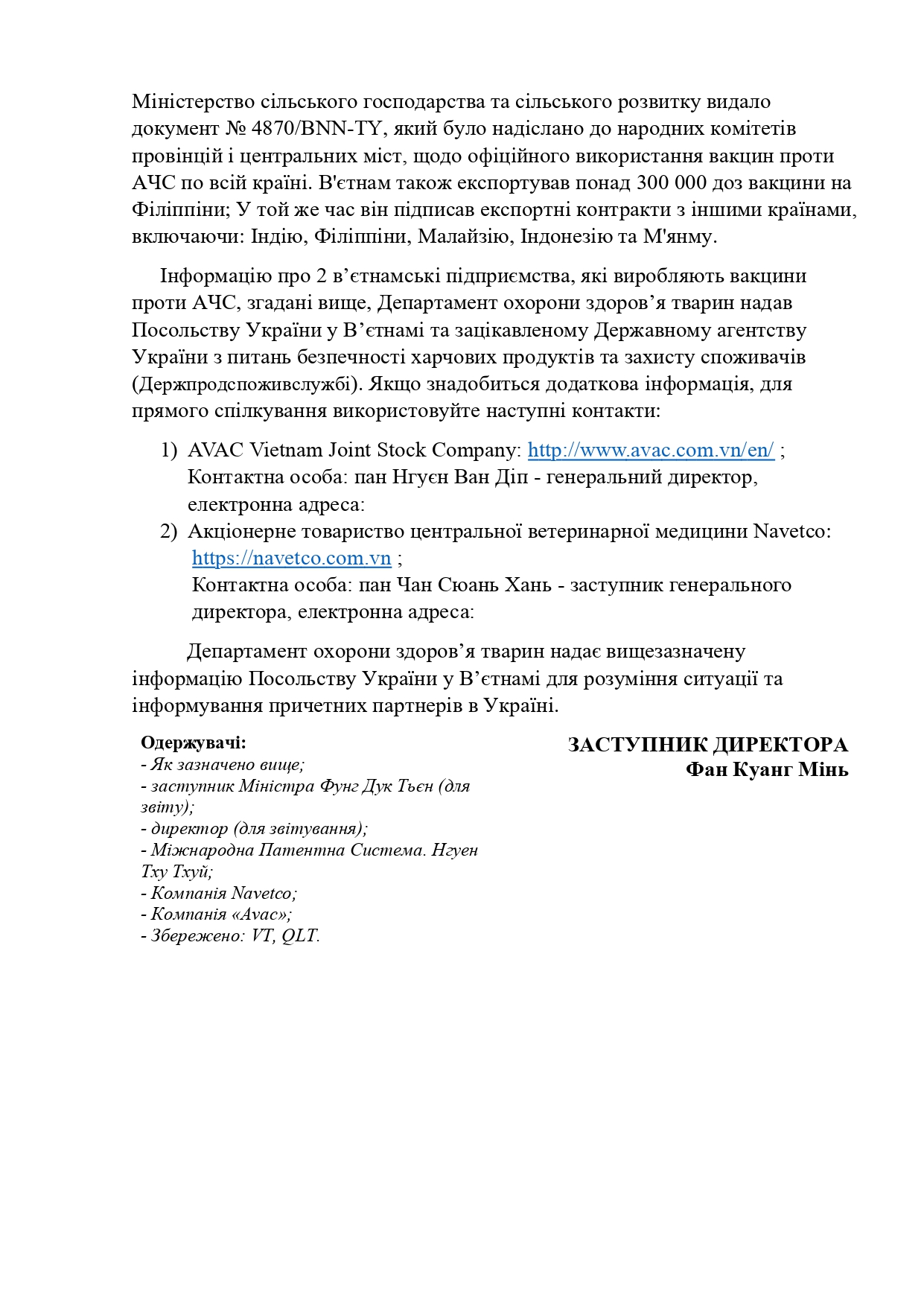
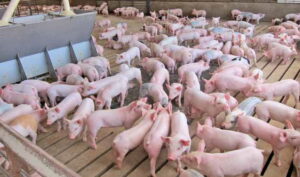
In June 2024, Ukraine increased the number of pigs to 5.2 thousand heads, which is 3.1% more than last year, but 3.4% less than in 2022, the Ukrainian Business Club (UCAB) reported, citing data from the State Statistics Service.
“Due to high purchase prices and cheap feed in 2022 and 2023, the pig industry could recover,” analysts said.
At the same time, they emphasized that in addition to the usual market changes, such as stabilization of grain and oilseed prices, companies must also adapt to the challenges of today. For example, rising energy prices and employee mobilization are forcing farmers to look for innovative ways to reduce costs and increase efficiency.
Experts recalled that in the second half of June 2024, Ukraine recorded the lowest average price in the last two years – UAH 46.3 including VAT per kg of cuttings. The last time such a price was observed at the end of April 2022. This figure was significantly closer to the level of production costs, which excited producers. However, in early June, the price of cuttings rose to 55.1 UAH/kg including VAT.
“There is no single factor that would have a significant impact on this, as this situation is caused by a set of reasons that are atypical for this period of time. First, there has always been a growth trend in the first half of summer, even during the war. This year, power outages and mobilization led to a decrease in demand. Secondly, if before the war imported pork influenced domestic pricing, now it does not. Volumes have dropped to 300-500 tons from 2500-4000 tons. Market changes are caused exclusively by internal factors, as most of the pork on the shelves is Ukrainian,” explained UCAB analyst Maksym Hopka.

Prices for slaughter pigs continued to decline in the second half of May and reached 55-57 UAH/kg, which is 4.5% lower than a week earlier, according to the Pig Producers of Ukraine association.
According to the report, most operators in the live market this week purchased animals in the range of 55-57 UAH/kg, although higher and lower quotes were occasionally found. The latter, in particular, mainly concern animals of high weight categories, the supply of which still puts pressure on the overall price situation.
According to experts, higher prices were observed in the western regions, while in other regions quotations tended to reach 55.5 UAH/kg. At the same time, the weighted average market price was fixed at 55.8 UAH/kg.
The expectations of meat processing representatives regarding further price dynamics differ. Thus, some procurers do not rule out further price weakness, citing sluggish sales and supply that exceeds demand. Other operators state that the volumes available for booking are quite moderate, and the average slaughter weight of animals is lower than usual. Some operators expect faster sales with the return of favorable weather conditions for picnics, the industry association explained.